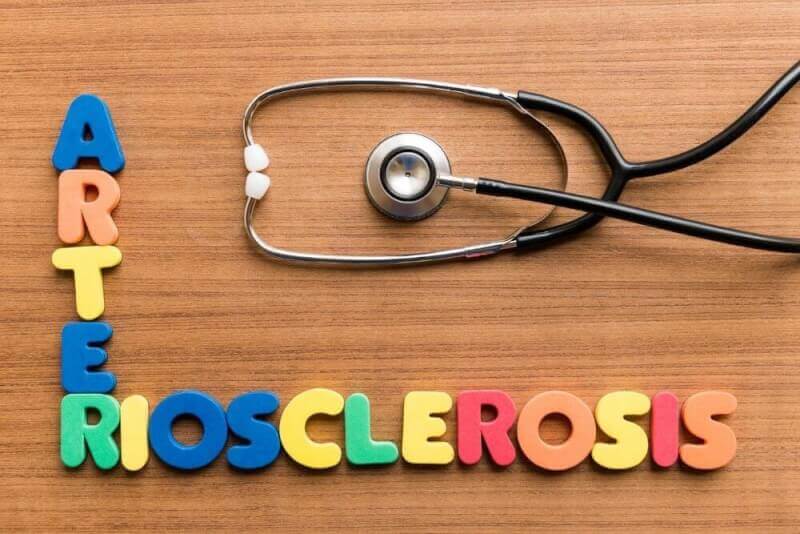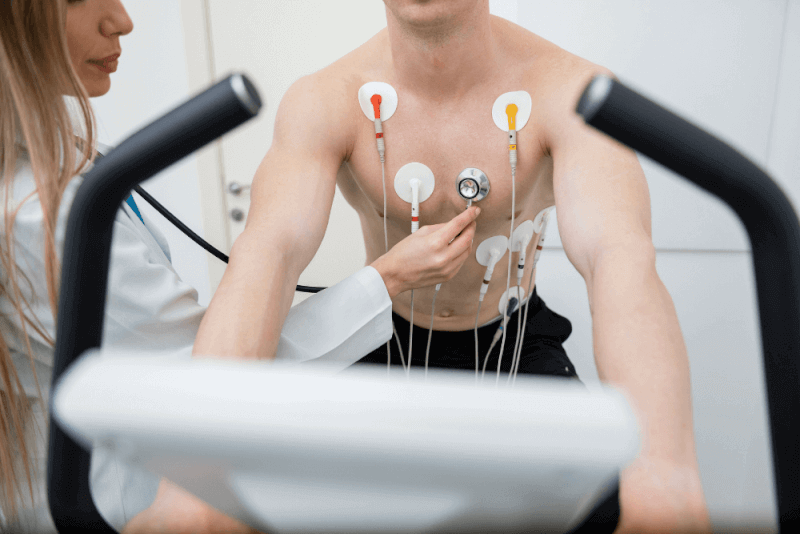What is arteriosclerosis?
Hardening of the arteries is called arteriosclerosis. In a normal person, the arterial wall is extremely flexible. However, over time, there is hardening of the vessel wall due to various reasons. This hardening of the arterial wall causes obstruction of blood flow and disruption of the circulatory system. Arteriosclerosis develops gradually.
It is a process that takes place over many years. There may be no symptoms during this period. The silent progression of the condition increases the risk of developing various diseases. Arteriosclerosis and atherosclerosis are two terms that are often confused. In the case of atherosclerosis, hardening of the arteries is caused by plaque accumulating in the arteries. However, arteriosclerosis can occur for any reason.
Types of atherosclerosis
Arteriosclerosis is basically divided into three types.
Atherosclerosis
Atherosclerosis is a type that affects the large and medium arteries. Plaque gradually accumulates in these vessels. This condition usually causes no symptoms in its early stages. However, as the plaque grows, the patency of the artery gradually decreases. This means that there is less space for the blood to flow.
In addition, plaque formation can lead to the formation of blood clots that completely block blood flow. Clots can cause medical emergencies such as heart attacks or strokes. Among the vessels in which atherosclerosis is frequently seen are the following.
- Aorta
- Coronary artery
- Jugular vein
- Femoral arteries
- Iliac arteries
Arterosclerosis
Arteriosclerosis, which affects small arteries, causes hardening of the blood walls. It is seen in the vessels that provide the connection between large arteries and capillaries. These vessels are important in controlling blood pressure or how strongly the blood moves through the body.
Arteriosclerosis can affect all blood vessels, including the kidneys and brain. The thickening of the walls of these vessels can prevent blood from reaching the organs. This can lead to complications.
Mönckeberg medial calcific sclerosis
This condition, also called medial arterial calcification, is seen when calcium is deposited in the middle layer of the arterial wall.
Calcification of the middle layer causes hardening of the blood vessel. It is especially seen in people over the age of 50. Diseases such as chronic renal failure cause the condition to appear earlier.
Diagnosis of atherosclerosis
In order to diagnose atherosclerosis, the specialist must first perform a physical examination. He/she then obtains detailed information about the patient by asking various questions about the patient's biological family history, lifestyle and symptoms. Some tests are used to confirm the diagnosis. These tests are used to check the health of blood vessels, assess blood flow and evaluate heart function.
Among the tests used to diagnose atherosclerosis are the following.
- Abdominal ultrasound
- Angiography
- Ankle arm index
- Carotid ultrasound
- Chest X-ray
- Computed tomography
- Echocardiography
- Electrocardiogram
- Exercise test
Causes of atherosclerosis
Changes in the arterial wall lead to atherosclerosis. These changes are microscopic in their initial stages and take place at the cellular level. An example is damage to the inner lining of the artery.
Usually such changes occur as we get older and there is nothing people can do to prevent age-related risk. In addition, it is important to learn about the risk factors, as it is possible to manage lifestyle-related atherosclerosis.
Symptoms of atherosclerosis
Symptoms of arteriosclerosis are usually not seen until it causes complications. The severity of the symptoms depends on the complications and may include the following.
- Burning and pain in the feet at rest
- Change in urination frequency
- Pain sensation in the chest
- Discomfort in the chest
- Dizziness
- Dry and itchy skin
- Numbness of the skin
- Heart palpitations
- Burnout
- Nausea and vomiting
- Leg pain
- Shortness of breath
- Slurred speech
- Difficulty in communication
- Foot wounds
- Edema
- Loss of vision in one eye
- Weakness on one side of the body
In case of the following symptoms, emergency help should be sought.
- Acute mesenteric ischemia
- Heart attack
- Pulmonary embolism
- Paralysis
- Transient ischemic attack
Treatment methods for atherosclerosis
Treatment of atherosclerosis mainly includes the following.
- Lifestyle changes
- Medicines
- Surgeries
Specialized doctors will tailor the treatment to the patient's needs. With this treatment it is possible to improve blood flow, reduce the risk of complications and manage symptoms.
Exercise for atherosclerosis
Regular exercise for people with atherosclerosis improves cardiovascular health. However, the exercise plan for patients needs to be tailor-made. The type, intensity, frequency and duration of exercise should be meticulously determined and an appropriate exercise schedule should be prepared for the patient in order to ensure that the benefit to be obtained from exercise is at an ideal level.
It is recommended that the exercise prescription consists of movements that work large muscle groups, can be sustained and are rhythmic. Sports with these characteristics include swimming, aerobics, cycling and walking.
If the exercise capacity of the patient is low, the intensity of the exercise program to be applied should be low and the duration should be short. The expected effect can be achieved by practicing such exercises several times a day. For patients with high exercise capacity, exercise at least 5 days a week is beneficial. In addition, patients can do aerobic exercises 7 days a week.
The intensity of exercise programs to be planned for patients should be determined according to their own perceptions. Because people's physical fitness level, general fatigue level and environmental conditions vary.
In general, it is recommended that exercise programs should last 30-60 minutes, excluding warm-up and cool-down periods. Longer than these periods cause patients to tend to stop exercising. Among the points that patients with arteriosclerosis should pay attention to while exercising are the following.
- You should always start with a 10- 15 minute warm-up.
- Stretching exercises should be performed during both warm-up and cool-down movements.
- Patients need to monitor their heart rate during exercise. During exercise, the heart rate should be at most 40% to 70% of the result calculated with the formula (220 - age).
- Blood pressure should not rise excessively during exercise.
- People with excessive erections should avoid intense exercise.
- People with severe and uncontrolled hypertension should have their blood pressure stabilized before starting exercise.
- Doing the exercise in a group will increase motivation.
- The activity level should be reduced slowly in the last 5-10 minutes of exercise.
- You should not hold your breath while exercising.
If patients feel the following symptoms during exercise, they should stop exercising immediately and consult their doctor as soon as possible.
- Extreme fatigue
- Chest pain
- Irregular heartbeat
- Discomfort in the chest
- Serious feeling of not being able to breathe
- Dizziness
- Fainting
Arteriosclerosis nutrition
A healthy diet prevents many diseases, especially atherosclerosis, in the long term. Vascular health in particular is seriously affected by diet. For this reason, the following are among the food groups that even healthy people should exclude from their diets to reduce the risk of atherosclerosis.
- Dairy products such as fruit-flavored yogurt, milkshakes and cream
- Confectionery and chocolates
- Carbonated drinks
- Fast food
- Sauces
- Delicatessen products
- Unhealthy fats
- White bread
- Desserts
- Canned foods
- Rice
People with arteriosclerosis should create their diet with healthy options. In a healthy diet, 30% of total calories should come from fats. Saturated, polyunsaturated and monounsaturated fats should be present in equal proportions.
In addition, the points to be considered in a healthy diet are as follows.
- Being at an ideal weight
- Using cooking techniques such as steaming, boiling or grilling instead of frying
- Preferring foods rich in fiber
- Feeding little and often
- Reducing the use of table salt in meals
- No alcohol and smoking
Angiography for atherosclerosis (arteriosclerosis)
Angiography is a method used for both diagnosis and treatment of atherosclerosis. Angiography can be used to measure the extent of the blockage. Thanks to this measurement, stenting is also performed during the angiography procedure if the patient meets certain criteria.
Arteriosclerosis bypass
Bypass surgeries will be a useful choice if arteriosclerosis patients cannot be treated with angiography. Especially in patients with severe conditions, bypass surgeries make it possible to replace the problematic vessels.
Complications of atherosclerosis
As arteriosclerosis disrupts normal blood flow in the body, oxygen and nutrients have difficulty reaching organs and tissues.
For this reason, atherosclerosis can cause the following complications.
- Aneurysms
- Jugular vein disease
- Coronary artery disease
- Critical limb ischemia
- Heart attack
- Kidney failure
- Mesenteric ischemia
- Peripheral arterial disease
- Pulmonary embolism
- Renal artery stenosis
- Paralysis
- Thrombosis
- Temporary bone spur
It is possible to have more than one type of atherosclerosis. In these cases, complications may occur earlier than usual.
What are the risk factors for atherosclerosis?
Risk factors that increase the likelihood of atherosclerosis include the following.
- Chronic kidney disease
- Type 2 diabetes
- High blood pressure
- Tobacco use
- High cholesterol
- Metabolic syndrome
- Advancing age
- Lack of physical activity









C** C** | 05 Jun 2024